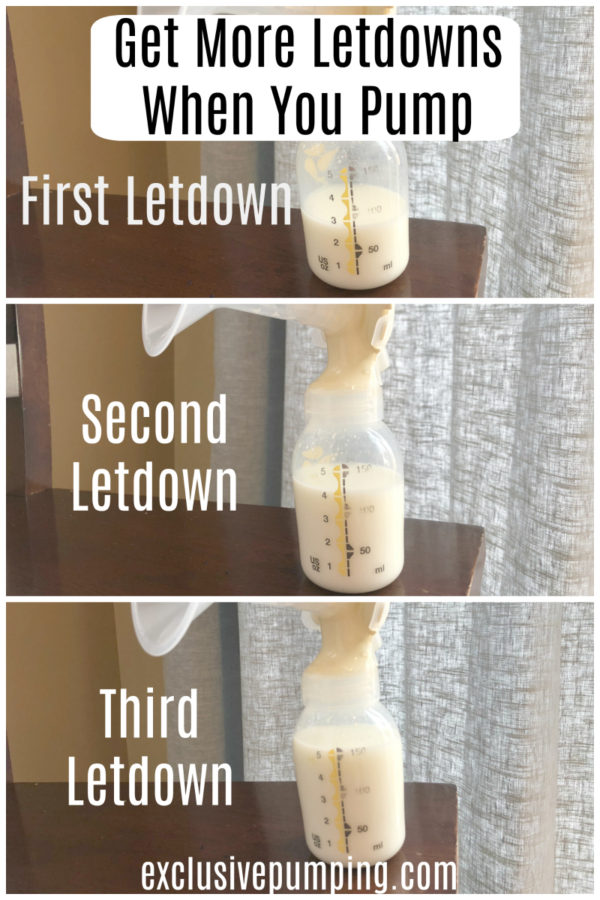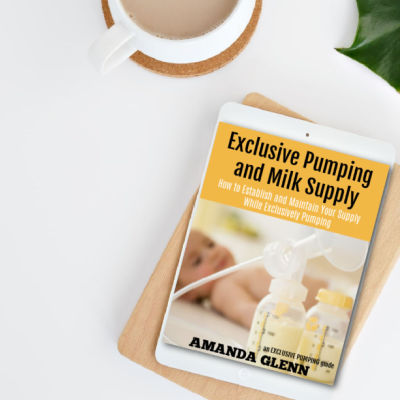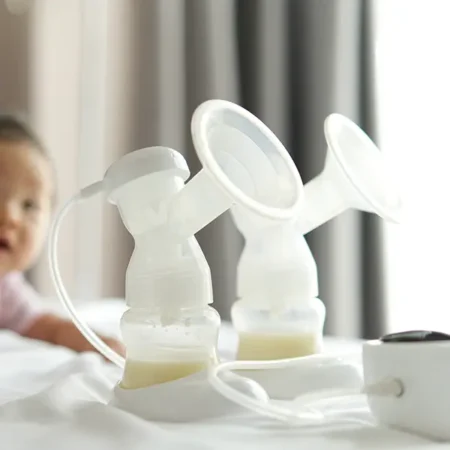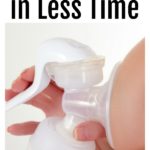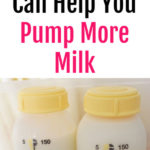If you pump breast milk, understanding how letdowns work is really important for your milk supply. Here is what you need to know, including what a letdown looks like, how to boost milk supply when pumping by getting more letdowns, and what to do if you have a hard time getting a letdown when pumping.
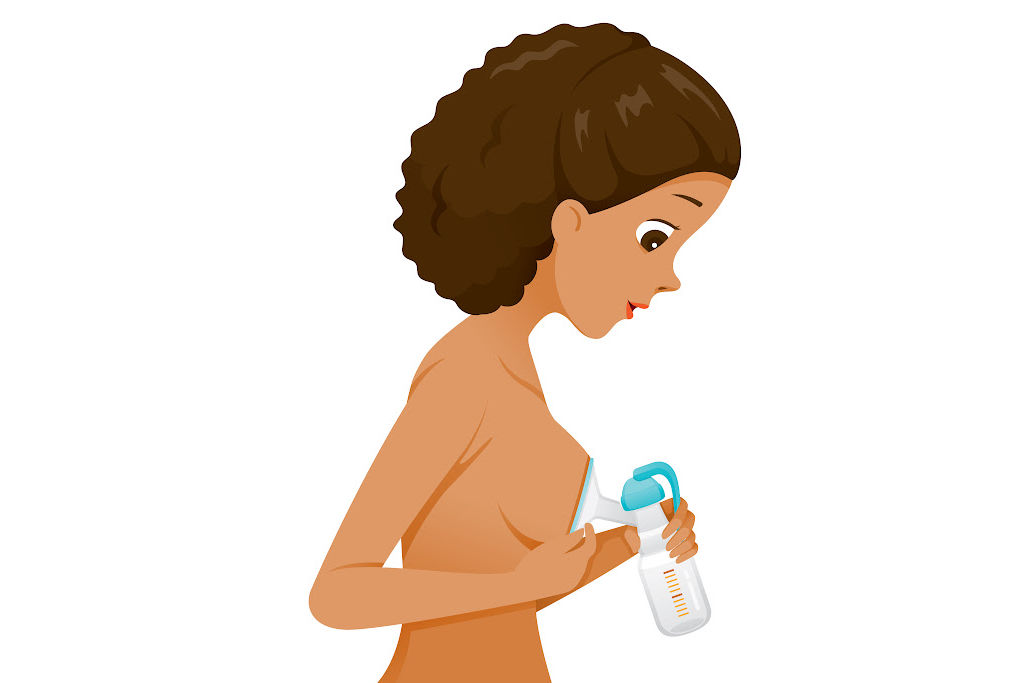
This post may contain affiliate links, which means if you click a link and purchase something, I may make a small commission at no additional cost to you. I only recommend products I love! More information here.
What is a letdown when breastfeeding, and why do I care?
A letdown is when your breasts release milk for your baby (or, in your case, your pump) to eat.
Most of the time, when you’re going about your day, your milk stays in your breasts (the occasional leak notwithstanding). It generally stays put until your breasts are stimulated by a baby or a pump.
This stimulation then signals the hormone oxytocin to release the milk from your milk ducts. The milk starts flowing, and this is called a letdown.
What does a letdown look like while pumping?
If you’ve just started pumping, it’s not always clear why sometimes you spray milk and sometimes you’re not getting anything. Here’s how letdown works:
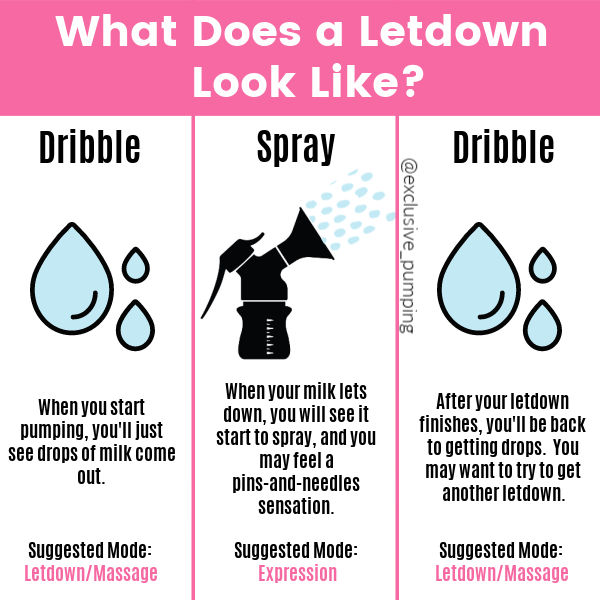
1. You start pumping and milk dribbles out
When you start pumping, most pumps will begin in the “letdown phase” – which is lighter and quieter – for about two minutes.
During this time, before you letdown, you might see milk dribbling out your nipple, and just a few drops going into the bottles.
2. Your milk lets down and starts spraying
When you have a letdown, you will see milk start to spray into the flange and flow more quickly into your bottles.
What does a letdown feel like?
A lot of moms feel a sort of pins-and-needles sensation in their breasts. Some women experience something more painful. If your baby is very young, you may also feel cramping in your uterus.
3. Milk flow stops and milk just dribbles out
After some time (in my experience, 5-10 minutes), milk flow will stop, and you’ll be back to just a dribble, if anything.
Letdowns and how to boost milk supply
So how are letdowns related to how you can boost your milk supply when you pump?
One way that you can pump more milk is to try to get second or third letdowns during your pumping sessions, where your milk starts flowing again after it has initially stopped.
How many letdowns should you get when you pump?
This depends on the length of your sessions – if you’re pumping for 20 minutes, many women are able to get two; if you’re pumping for 30, you might be able to get three.
How much more milk will getting additional letdowns get you?
Everyone is different, but my output for subsequent letdowns was generally about one quarter to one half of the previous letdown.
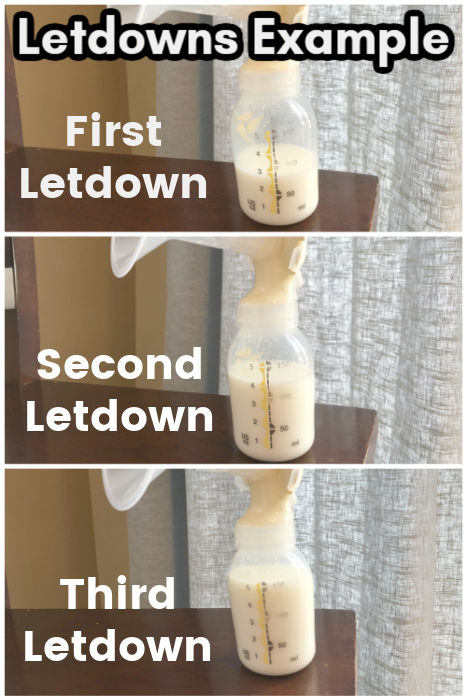
So, for example, if I pumped 3 oz in my first letdown, I might get another 1.5 oz in my second letdown, and .75 oz in my third. That’s an extra 2.25 oz than if I had thought my breasts were empty, and just stopped pumping after the first letdown!
What if you’re pumping and pumping and your milk isn’t letting down?
If you’re waiting a long time for a letdown, you can end up wasting a lot of your pumping time.
This can mean that you’re not able pump long enough to get a second or third letdown, or that you are but you end up pumping for an unsustainable amount of time.
How to get a faster letdown
If you struggle with not getting a letdown quickly enough, you might have read that you should look at a picture of your baby, hold something that smells like him or her, etc.
These strategies will often work much better for nursing women than for exclusive pumpers, because letdown is a conditioned response – nursing mom’s bodies have learned to release milk when they are close to their babies.
Exclusive pumpers – especially those who switched to pumping early – may not have the same conditioning. Their babies are not always close to them when their milk lets down.
So, what might help you get a faster letdown instead? Here are some strategies you can try.
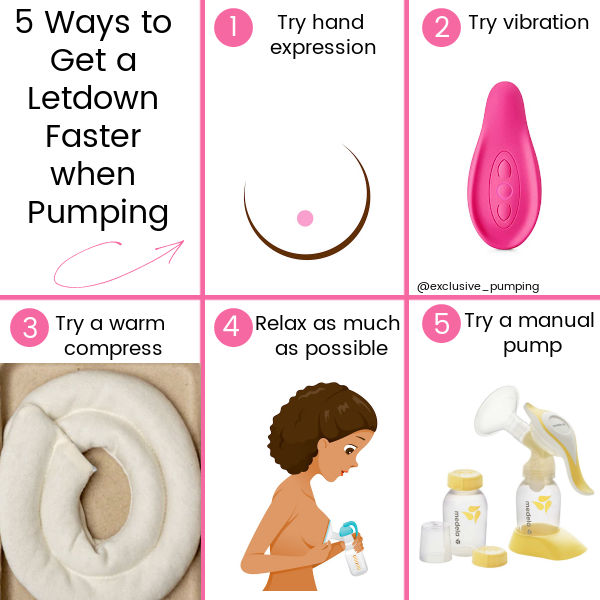
1. Hand expression
Some women have much better luck getting a letdown with incorporating hand expression at the beginning of their pumping routine.
What you can do is get everything ready to pump and set yourself up on one side, then try to hand express on the other until your milk lets down.
Once that happens, you can quickly set yourself up to pump on the other side and let the pump take it from there.
2. Vibration
Some women find that the vibration from a lactation massager will help get milk flowing and get you a quicker letdown, especially when you are dealing with engorgement.
Additionally, some women who have painful letdowns have noted that it helps with that, too.
(*The lactation massager I recommend is available on amazon, or you can also get a 10% discount buying directly from LaVie with the promo code EPUMP.)
3. Relaxing
If you hate pumping, then obviously it can be stressful to sit and pump.
Try to make pumping as comfortable as possible for you. Make sure you’re warm enough (versus being topless and freezing), and try to do something that you enjoy, like watching a show, scrolling TikTok, or reading a book.
Also, if you get anxious about the amount you’re pumping, try covering up the bottles with a baby sock, blanket, or nursing cover, and try to focus on something else.
4. Heat
Sometimes heat can help trigger a letdown, so a warm compress might help.
Something like a warm washcloth or Booby Tubes are good options.
Need help with exclusive pumping? Use EPUMP30 for 30% off
5. Try a manual pump
For reasons we don’t really understand, some women seem to have more success with a manual pump rather than an electric pump.
Obviously, using a manual pump is less than ideal since you can only do one side at a time (and it can be hard on your hand).
Try it and see if you can get a letdown more easily with it. Then you can switch to an electric pump after your milk lets down.
Do you find that milk flows slowly once you get a letdown? Here are some tips for how to pump faster.
If you have any other tips for getting a faster letdown, definitely add them in the comments!
Updated to add: This reddit post is hilarious and illustrates the conditioned response thing really well:
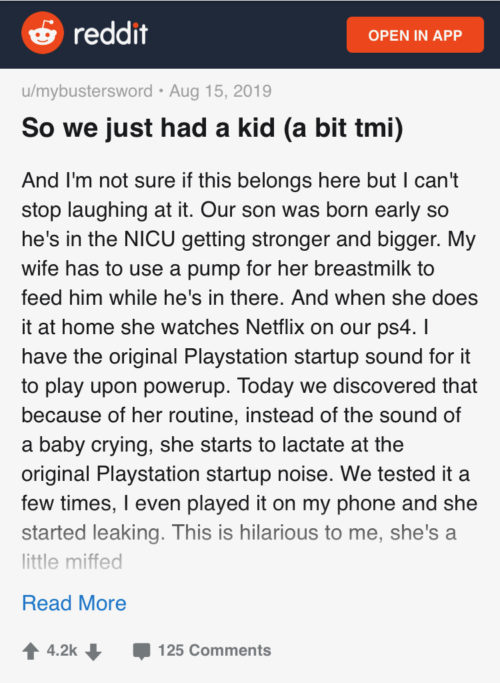
References
- Australian Breastfeeding Association. “Let-down reflex (milk ejection reflex).” https://www.breastfeeding.asn.au/bf-info/early-days/let-down-reflex
- Cherry, Kendra. “What Is a Conditioned Response?.” https://www.verywellmind.com/what-is-a-conditioned-response-2794974
- Perles, Karen. “Coping with Painful Letdown.” https://www.care.com/c/stories/4411/coping-with-painful-letdown/

